Liposuction Or Coolsculpting: Which Is Better for Your Goals?

While a healthy diet and regular exercise are the best way to achieve a slim and toned figure, they can only do so much. For those looking to remove stubborn fat deposits resistant to diet and exercise, there are two popular cosmetic procedures: liposuction and CoolSculpting. Liposuction is a procedure that removes fat deposits from the body using a cannula and suction. CoolSculpting is a non-invasive procedure that uses cooling technology to freeze fat cells, causing them to be processed out of the body naturally.
Read more: How Much Weight Is Lost With Liposuction?
The liposuction and CoolSculpting procedures can effectively remove stubborn fat deposits and help you to achieve a more contoured figure. However, the proper treatment for you will depend on your individual goals, body type, health history, lifestyle factors, and other considerations. Here’s how you can choose.
How Does Liposuction Work?
Liposuction is a procedure to remove fat from areas of the body. A thin cannula is inserted into the fat deposits and suctioned out through the vacuum device. This method can help reshape and contour different body parts, such as thighs, buttocks, abdomen, arms, neck, and chin. Liposuction can also remove excess fat from other areas, such as the face and neck.
Some benefits of liposuction include the following:
a) Removes a large amount of fat in one procedure
b) Results can be seen immediately
c) Can target specific areas of the body for contouring and sculpting
d) Requires only local anesthesia, which means less risk than general anesthesia.
How Does CoolSculpting Work?
When it comes to CoolSculpting, the process works by using a device to freeze fat cells. The frozen cells are then naturally broken down and processed out of the body over time. The science behind this method is called “cryolipolysis,” which is why it’s sometimes referred to as “freezing the fat.”
Some reasons to choose CoolSculpting to include the following:
a) It is quick and non-invasive, meaning you can return to your routine immediately after the treatment.
b) It requires no anesthesia.
c) There is typically minimal discomfort during the procedure.
d) Results are usually seen within a few months following the session.
Factors To Check While Choosing Between Liposuction and CoolSculpting
Here are factors you should consider while deciding between liposuction and coolsculpting:
a) Age
CoolSculpting is generally recommended for those under the age of 40 and within 30 pounds of their body weight, as it works best for smaller areas of fat. Liposuction is a better option for older patients seeking more dramatic results from larger fat deposits.
b) Fat Distribution
CoolSculpting targets unwanted fat in specific areas, such as the abdomen, love handles, thighs, and arms. It may also reduce a double chin or eliminate stubborn fat pockets on the flanks. Liposuction can work well for larger deposits of fat all over the body that are resistant to diet and exercise.
c) Skin Tone
CoolSculpting works best for those with good skin tone, as it can tighten and contour the skin in areas where fat has been removed. Liposuction is usually better for those with poor skin tone or loose, sagging skin around the treated area.
Call Hospital BC for the best liposuction in Tijuana. We can help you decide whether liposuction or coolsculpting is the best option for your body sculpting goals.
What To Expect After Liposuction?
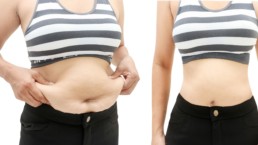
Liposuction is a surgical procedure that can provide long-lasting results for those looking to remove unwanted fat. It involves suctioning fat deposits from specific body areas and can be done on almost any area, including the abdomen, thighs, arms, and neck. Many factors affect the recovery and results of liposuction surgery. These include age, lifestyle, and health.
Read more: Is There an Age Limit on Liposuction?
If you are considering liposuction surgery, you must know what you can expect in the weeks and months following your procedure. Each individual’s experience will vary, but there are some general things that you can expect. We will discuss the ten most common things patients experience after liposuction surgery.
1) Small Amount of Swelling
During a liposuction procedure, fat cells are removed from the body, and this causes swelling. Swelling is normal after a liposuction procedure and will start to subside within a few days of your surgery. Your doctor may give you compression garments or bandages to help reduce swelling.
2) Localized Soreness
You may experience some localized pain and soreness in the treated areas. This happens due to the skin and underlying tissue trauma during the liposuction procedure.
Pain medication can help reduce discomfort.
3) You Will Experience Drainage
Drainage is one of the most common and important things to expect after liposuction surgery. This is normal, as it helps eliminate fluids that accumulate during the surgical procedure. In some cases, small drains are used to help with this process. These are typically removed in a few days or weeks, depending on your specific situation and the advice from your doctor. Drainage can last for several weeks, so it’s essential to wear a particular garment with sealed pockets to contain the drainage. These garments are usually provided by your doctor and should be worn to help heal.
4) Your Skin Will Retract
Immediately after liposuction surgery, you may notice that your skin appears loose and wrinkled. Don’t worry—this is perfectly normal! This occurs because the underlying fat cells have been removed, leaving more space than before. Your skin will naturally tighten over time as it adjusts to its new contours. Wearing a compression garment while your skin is retracting can help to speed up the process. In some cases, additional treatment may be needed to help with this issue. Talk to your surgeon about what you can do at home and any additional treatments that may be recommended.
5) Numbness May Occur
Another common thing to expect after liposuction surgery is some degree of numbness. As a result of the trauma to the surrounding area, it’s common for the skin and muscles in the treatment area to be slightly numb. This typically resolves on its own as nerve endings heal. In some cases, the area may have a slight tingling sensation or tenderness.
Liposuction is a popular cosmetic procedure that can help you achieve a more sculpted and contoured figure. However, it is essential to understand what to expect after your surgery. Hospital BC offers the best liposuction in Tijuana. Our highly trained surgeons can help you achieve the desired body contouring results.
Liposuction Vs. Gastric Bypass: Which Is Best For You?
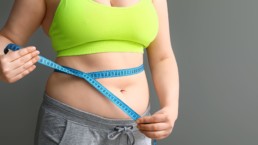
Weight loss surgeries are on the rise due to the increase in obesity. The two most common weight loss surgeries are gastric bypass and liposuction. Gastric bypass involves making changes to the digestive system so that less food is digested and absorbed. Liposuction is a procedure to remove fat from the body.
Following a strict diet and lifestyle post-surgery is essential to ensure the weight stays off. For example, gastric bypass patients must consume smaller meals and avoid high-sugar and high-fat foods.
Read more: Foods to Avoid After Your Gastric Bypass: What You Need to Know.
If you want to choose any of these surgeries, you should consult your doctor to see which one is best for you and your individual needs.
Read on to understand how each of these surgeries works and the pros and cons of each.
What Is Liposuction and How Does the Procedure Work?
Liposuction is a cosmetic surgery procedure that removes excess fat from the body. A cosmetic surgeon will make small incisions in the skin and then suction out the fat with a vacuum-like device. Liposuction will be performed on various body areas, including the thighs, hips, stomach, arms, and neck.
You may be a good patient for liposuction in Tijuana if you are of relatively normal weight but have stubborn fat, which diet and exercise alone cannot remove. However, liposuction is not a weight-loss surgery and should not be used as a substitute for healthy eating and exercise habits.
Some benefits of choosing liposuction over other weight-loss methods include the following:
- You can target specific areas of fat.
- The results are usually permanent.
- There is lesser scarring and a faster recovery time than other surgeries.
What Is Gastric Bypass Surgery and How Does It Work?
This is a type of weight-loss surgery. It’s also called Roux-en-Y gastric bypass or RYGB. This procedure makes your stomach smaller and allows food to bypass part of your small intestine. That means your body absorbs fewer calories.
Doctors usually recommend gastric bypass surgery for people who have a BMI of 40 or higher. You might also be a candidate if you have a BMI of 35 and other health problems related to your weight, such as type 2 diabetes or sleep apnea.
During gastric bypass surgery, the surgeon will:
Make a pouch at the top of your stomach by stapling it shut.
Divide the small intestine and attach the lower part of it directly to the small stomach pouch.
Reattach the upper part of the small intestine further down, past the stomach pouch.
Some benefits of choosing this surgery include the following:
- You’ll Lose Weight
- Improved Health
- Reduced Risk of Disease
- Increased Energy Levels
- Better Sleep Quality
- Improved Self-Esteem
How To Choose the Right Option?
Some factors that you’ll want to consider when deciding between these two procedures include
the following:
- The weight you want to lose
- The areas of your body where you’d like to see fat loss
- Your overall health
- Your willingness to make lifestyle changes
Liposuction may be the better option if you only want to lose a few inches in a specific area. However, gastric bypass surgery may be a better choice if you’re significantly overweight and looking to lose weight.
Call Hospital BC for the best gastric bypass in Mexico. Our surgeons are experts in performing laparoscopic gastric bypass.
Is It Safe to Exercise After Liposuction?

Cosmetic surgeries are on the rise as people become increasingly interested in improving their appearance. One such surgery is liposuction, which can help to sculpt the body by removing unwanted fat deposits.
Understandably, patients who have undergone liposuction may be eager to return to their routine, including exercise. However, taking things slowly and not overdoing them is essential, as this could lead to complications.
How Soon Can I Exercise After Liposuction?
While it is crucial to maintain an active and healthy lifestyle to achieve long-lasting results from liposuction, it is vital to give your body time to recover after the procedure.
Strenuous activities like running, jogging, weight-lifting, etc., can put unnecessary strain on your body and cause discomfort.
You may experience bleeding, bruising, infection, and swelling after liposuction.
It is best to wait for at least four-six weeks before resuming any rigorous and strenuous exercise. Toning exercises and light cardio can be started two weeks post-surgery.
It is essential to listen to your body and not push yourself too hard too soon. Some factors that affect the results and recovery from lipo are:
- The type of procedure you undergo
- The areas treated
- Your age
- Your skin tone
- Your lifestyle
- Your body type
Read more: Is there an age limit on liposuction?
What Kind of Exercises Can I Do to Maintain the Results?
After liposuction, you will want to maintain your results with a healthy lifestyle. It includes eating a balanced diet and exercising regularly. But what kind of exercises can you do after abdominal liposuction?
1. After Two -Three Weeks: Light Cardio Exercises Such As Walking Or Swimming
You can start with light cardio exercises such as walking or swimming within the first week after your surgery. These activities will help increase your circulation and reduce swelling.
2. After Three-Four Weeks: Strength-Training Exercises
Gradually, you can start to add strength-training exercises to your routine. These exercises will help tone your muscles and give you a more sculpted look. These include squats, lunges, and crunches.
Start with two to three sets of 12 to 15 repetitions and increase the weight as you get stronger.
3. After Six Weeks: More Challenging Cardio Exercises
After six weeks, the incisions and swelling should be healed, and you can start to add more challenging cardio exercises to your routine. These include running, biking, aerobics, and lifting weights.
You should always consult your surgeon before starting any exercise after liposuction. They will be able to give you specific instructions based on your case.
Hospital BC offers the best liposuction in Tijuana. Our surgeons are highly skilled and experienced in performing this procedure. You can trust us to give you the best possible results.
Will My Fat Reappear After Liposuction?

Liposuction is a popular cosmetic surgery procedure that is used to remove excess fat from the body. However, there is some concern that the fat may return after liposuction is performed. In this blog post, we will explore the evidence surrounding this question and provide you with an answer based on the latest research.
What Is Liposuction?
Liposuction is a surgical procedure that involves the removal of excess fat from the body. The fat is removed through a small incision in the skin, and a suction device is used to remove the fat. Liposuction can be performed on various parts of the body, including the stomach, thighs, hips, buttocks, arms, and neck.
How Does Liposuction Work?
Liposuction works by breaking up the fat cells and then suctioning them out of the body. The surgeon will make a small incision in the skin and insert a thin tube called a cannula into the fatty tissue. The cannula is connected to a vacuum pump which sucks out the fat cells.
Does Fat Return after Liposuction?
Now that we have answered the question of what liposuction is and how it works, let’s explore the question of whether or not the fat returns after the surgery is performed. The short answer to this question is no; the fat does not return after liposuction. Once the fat cells are removed from the body, they are gone for good.
Learn more by reading How Much Weight Is Lost With Liposuction?
There are a few reasons why the fat cells do not return after liposuction. First, when the fat cells are removed, they are broken up and suctioned out of the body. This means that there is no longer a large mass of fat cells in one area for the body to re-absorb. Second, the body does not have an easy way to replace the lost fat cells. Fat cells are not like other types of cells in the body, such as skin or blood cells, which can easily be replaced. Once the fat cells are gone, they are gone for good.
What Happens if You Gain Weight After Liposuction?
The new weight will be distributed evenly across your body and will not be focused on the areas that were treated with liposuction. This is because you no longer have those large masses of fat cells in those specific areas.
Conclusion
If you are considering liposuction, it is important to maintain a healthy weight after the surgery. While the fat cells will not return, they can still expand if you gain weight. This can cause the treated area to become larger than it was before the surgery.
For information on liposuction in Tijuana, contact Hospital BC.
Is There an Age Limit on Liposuction?
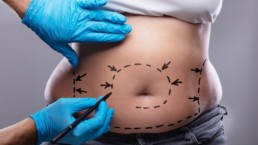
Liposuction is a popular cosmetic surgery procedure that can help people achieve a more toned appearance. However, some people are wondering if there is an age limit on liposuction. In this blog post, we will explore how old you have to be to get liposuction and discuss whether or not it is safe for older adults to undergo the procedure.
What Is Liposuction?
Liposuction is a surgical procedure that removes fat from the body using suction. A small, metal tube called a cannula is inserted through tiny incisions in the skin and used to break up the fat cells before suctioning them out. The procedure can be performed on various areas of the body, including the abdomen, thighs, hips, buttocks, arms, and neck.
Is lipo for weight loss? Read: How Much Weight Is Lost With Liposuction.
Is There an Age Limit on Liposuction?
There is no set age limit for liposuction. However, it is important to note that the safety and effectiveness of the procedure may vary based on a person’s age and health. For example, older adults may be more at risk for complications after surgery due to their increased risk for health conditions such as diabetes, heart disease, and hypertension. Additionally, the skin of older adults may not heal as well after surgery, which could lead to visible scarring.
But what about children and teens? Can you be too young for liposuction?
The answer to this question is a bit more complicated. At what age can you get liposuction? In general, it is not recommended that children or teens undergo liposuction due to the potential for negative side effects. For example, liposuction can cause emotional trauma and body dysmorphic disorder (BDD), which is a condition characterized by an obsession with one’s appearance. Additionally, the procedure can interfere with normal growth and development in children and teens.
So, while there is no age limit per se on liposuction, it is important to consider your age and health before undergoing the procedure. If you are considering liposuction, we recommend talking to a board-certified plastic surgeon to see if it is right for you.
The Final Word
Ultimately, the decision to undergo liposuction should be made on an individual basis after consulting with a board-certified plastic surgeon. During your consultation, your surgeon will evaluate your health and discuss the risks and benefits of the procedure.
If you are considering liposuction, it is important to choose a plastic surgeon who has experience performing the procedure on patients of all ages. We offer both traditional and minimally invasive liposuction techniques and can tailor the treatment to meet your unique needs and goals. Talk to us about liposuction in Tijuana, Mexico.
How Much Weight Is Lost With Liposuction?
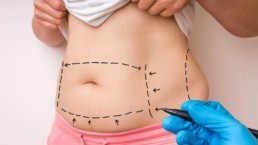
Liposuction is a surgical procedure that is used to remove fat from the body. It is often used to improve the appearance of certain areas, such as the stomach, thighs, and buttocks. Liposuction can be performed on both men and women, and it is one of the most popular cosmetic procedures in the world. But can it also help you lose weight?
In this blog post, we will discuss how much weight is lost with liposuction and better surgeries to choose for authentic weight loss.
First, Understand the Difference Between Weight Loss and Body Contouring
Before getting into how much weight you can lose with liposuction, you need to understand what type of a procedure it is. Liposuction is a body contouring procedure. This means it is designed to smooth out the lines of the body, making it look slimmer and more toned. Weight loss, on the other hand, is a reduction of body mass, usually through the shrinking of fat cells. While liposuction eliminates some fat cells and thus will have an impact on body mass, it isn’t a weight loss procedure.
How Much Weight Will I Lose With Liposuction?
The amount of weight that is lost with liposuction depends on several factors. For example, if you have a large amount of fat in the area where liposuction is performed, then you can expect to lose more weight than someone who has less fat there. Also, your surgeon will decide how many units they think they should remove during your procedure, and this may impact the final outcome as well.
While some people do achieve noticeable weight loss after having liposuction, it’s not uncommon for patients to only lose a couple of pounds. Essentially, you should not use liposuction as a weight loss method; it is just for creating more attractive lines and slimming the targeted areas.
What Are Better Options for Weight Loss Surgery?
While there are many surgical methods for weight loss, the most popular procedures include gastric bypass surgery and bariatric surgery. Gastric bypass surgery makes it so that you have a smaller stomach, which means you can’t eat as much food before feeling full. Bariatric surgeries work in different ways to reduce your appetite or make it so that certain foods don’t digest properly.
Read Lipo or Bariatric Surgery: How to Tell if You Are a Candidate for Both.
These types of surgeries also have risks involved with them, but they’re generally considered safe when performed by an experienced surgeon who specializes in these types of operations. If you need help losing weight but aren’t sure if liposuction is right for you, talk to your doctor about other options that may be available instead.
For more information on weight loss procedures or liposuction in Tijuana, contact Hospital BC.
Are Tummy Tucks and Lipo the Same Thing?
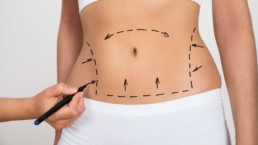
There are a lot of misconceptions when it comes to plastic surgery. One big one? That liposuction and tummy tucks are the same thing. We assure you they are not. But what’s the difference between tummy tucks and liposuction? Let’s take a look!
What Is Liposuction?
Liposuction is a surgery that removes fat from specific areas of the body. It’s most commonly used on the stomach, hips, thighs, and buttocks. Lipo can help contour these areas and give you a more flattering figure.
What Is a Tummy Tuck?
A tummy tuck, or abdominoplasty, is a surgery to remove excess skin and fat from the middle and lower abdomen. This procedure can also tighten abdominal muscles that have become stretched out over time. A tummy tuck is often recommended for people who have lost a lot of weight or had children.
What’s the Difference Between Lipo and a Tummy Tuck?
So what are the key differences between lipo and a tummy tuck? First, lipo is only meant to remove fatty tissue while a tummy tuck can also remove skin and tighten muscles. Second, a tummy tuck is a more extensive surgery than lipo and requires general anesthesia. Finally, lipo is a shorter, less invasive procedure while a tummy tuck typically takes two to three hours.
Can You Combine Lipo and Tummy Tucks?
Many people choose to have both liposuction and a tummy tuck for the best results. This combination can help contour your entire body and give you the slimming effect you desire. If you’re considering this combo, be sure to talk to your surgeon about what’s right for you.
Are There Other Combination Plastic Surgery Procedures?
Yes! There are a number of different plastic surgery procedures that can be combined for the best results. Some popular combos include breast augmentation and liposuction, rhinoplasty and chin implants, and blepharoplasty and brow lift. There is even the mommy makeover, which allows you to pull together whatever procedures most interest you.
So there you have it! Lipo and tummy tucks are two different surgeries with different goals. If you’re looking to contour your entire body, a combo procedure may be right for you. Consult with the Hospital BC team to see if liposuction in Tijuana, Mexico, or a tummy tuck in Tijuana is the best option for you.

